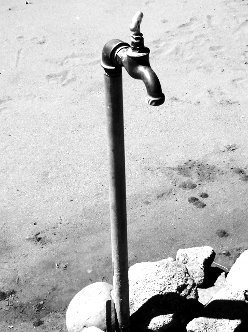Severe shortage striking worldwide
 Four billion people face severe water scarcity for at least one month a year, according to a new report.
Four billion people face severe water scarcity for at least one month a year, according to a new report.
The study - published in Science Advances - is the first to look at water availability around the world on a monthly basis, assessing some regions down to a resolution of just 60 square kilometres.
Over half of the four billion people living with monthly severe water shortage live in India and China.
Shockingly, half a billion people worldwide face severe water shortages for the entire year.
The report did find that there is enough water to support the global population, but the concentration of food production areas means many use more water than the region can sustain.
“Groundwater levels are falling, lakes are drying up, less water is flowing in rivers, and water supplies for industry and farmers are threatened,” explains Professor Arjen Hoekstra, who coauthored the study.

“In this research, we established the maximum sustainable ‘water footprint’ for every location on earth, and then looked at actual water consumption. If the latter is much greater than what is sustainable, then there can be said to be severe water scarcity.”
A region was included on the list if its consumption of fresh water, either from underground aquifers or rivers and lakes, reached twice the amount that was put back into the system through natural processes such as rain.
But this did not only highlight obvious dry areas like deserts of North Africa, Australia and the Middle East. It shows that regions such as southern Europe and the eastern US often run at a deficit too.
Most water is being used for agriculture, with meat being particularly water intensive. Other research has suggested meat production takes up around 25 percent of all water used globally.
There are incredible waste problems too, with about half of all food –2 billion tonnes per year – being thrown away before it reaches a plate.








 Print
Print